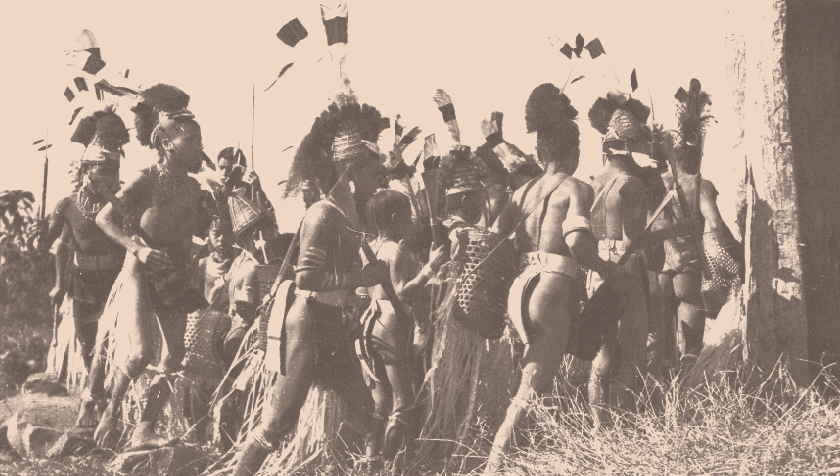
การแผ่ขยายของมายาคติว่าด้วยความเป็น ‘ชนเผ่า’ : กรณีชาวนาคา
The Unfolding of Myth of the ‘Tribal’: A Case of the Nagas
โดย จักรี โพธิมณี / By Chakri Bhodhimani
Damrong Journal, Vol 15, No.1, 2016
บทคัดย่อ:
กลุ่มชนเผ่านั้นเป็นประดิษฐกรรมทางสังคมอย่างหนึ่งที่มีความหมายไม่คงตัว คำว่า ‘กลุ่มชนเผ่า’ ถูกใช้เพื่ออธิบายกลุ่มคนประเภทหนึ่ง และมีความหมายเกี่ยวเนื่องที่มักเป็นที่เข้าใจผิดอยู่บ่อยครั้ง ส่งผลให้ความเข้าใจเกี่ยวกับว่ามโนทัศน์ต่างๆ ที่ผูกติดกับความเป็นชนเผ่านั้นตายตัวและไม่ยืดหยุ่น โดยทั่วไปการตีความทางสังคมเกี่ยวกับชนเผ่าจะอ้างถึงลักษณะที่บรรพกาลและล้าหลัง ซึ่งผูกมัดอย่างยาวนานอยู่กับชุมชนจำนวนมากที่ไม่สามารถควบคุมวิถีการผลิตได้ โดยเฉพาะตั้งแต่หลังการคลี่คลายของลัทธิอาณานิคมเป็นต้นมา บทความนี้เสนอว่า ความเป็นชนเผ่าไม่ใช่เรื่องที่จะเหมารวมในแง่การจัดประเภททางสังคมเชิงเอกพันธุ์ได้ ในกรณีศึกษาเกี่ยวกับกระบวนการก่อรูปของความหมายดังกล่าว ในบทความนี้เป็นการยกตัวอย่าง กลุ่มชาติพันธุ์นาคา ที่มิได้มีภาวะความเป็นจริงทางสังคมอยู่บนพื้นฐานของการมีเขตแดนตายตัว การจัดองค์การทางสังคมอย่างง่าย ศาสนาดั้งเดิมและภาษาร่วมกัน ดังนั้น ในบทความนี้จะเป็นการวิเคราะห์การเมืองเรื่องอัตลักษณ์ของชาวนาคาผ่านตัวบทประเภทภาพถ่ายที่หมุนเวียนอยู่ในวัฒนธรรมทางสายตาของชาวนาคาโดยเน้นที่ลักษณะโดดเด่นทางชาติพันธุ์และเรือนร่างผู้หญิง โดยทำความเข้าใจผ่านประวัติศาสตร์เชิงการเมืองและเชิงชาติพันธุ์ เพื่ออธิบายการประกอบสร้างและรูปแบบที่เปลี่ยนแปลงของวัฒนธรรมและการเมืองเรื่องอัตลักษณ์นาคา โดยสรุป บทความนี้โต้แย้งว่า ชาวนาคานั้นจำต้องพาตัวเองเข้าสู่สถานการณ์เชิงการเมืองในชีวิตประจำวันที่ต้องธำรงความโดดเด่นของวัฒนธรรมร่วมบางประการ แม้ว่าจะถูกยัดเยียดตราประทับและมลทินทางสังคมที่บรรพกาลและล้าหลังก็ตาม
ABSTRACT:
Tribe is a social construct which has no constant meaning. While the word ‘tribe’ is used to describe a group of people, the understanding of this narration is very often delusional, leading people to believe that the concept associated with it is fixed and rigid. The label of tribal is repeatedly understood to mean primitive and backward and is attached enduringly to numerous communities who were unable to control their mode of production, particularly during post-colonial phase. In this paper, I contend that ‘tribal’ cannot be generalized as a homogenous social category. If we regard a tribe as a social group that has certain territory, simple political organization, common religious beliefs and single spoken language, with respect to the Nagas, this is not the case. Likewise, this paper will take into consideration the political history and ethnohistory of the Nagas so as to identify the construction and changing patterns of Naga culture and identity politics. In this review, the rising phenomenon of identity politics of the Nagas will be closely scrutinized through the circulation of visual culture specifically tied in with features of ethnic interest as well as the feminine body. Conclusively, the paper suggests that the Nagas are forced into a situation where they have had to preserve the distinctiveness of their culture, despite or because of manipulation and threats imposed by primitive stigmas and labels.











